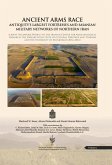As the narrative progresses, the focus shifts to Mohammad Reza Shah's reign, his relationship with foreign powers, particularly the United States, and the political and social challenges he faced. The 1953 coup, backed by the CIA and MI6, is scrutinized as a pivotal moment that cemented the Shah's dependency on Western support, and the subsequent political repression and the White Revolution are analyzed in the context of growing dissent. The book highlights the opposition movements, particularly the religious and leftist factions, and examines the events that culminated in the 1979 Islamic Revolution, leading to the overthrow of the Pahlavi monarchy.
The Islamic Revolution's aftermath, the establishment of the Islamic Republic under Ayatollah Khomeini, and the challenges faced by the new regime are explored in detail. The book analyzes the political, social, and religious transformations under the Islamic Republic, offering insight into the tensions between revolutionary ideals and authoritarian practices. The work also discusses the broader implications of the revolution, Iran's role in the Middle East, and the evolution of its political culture in the years following Khomeini's death in 1989.
This book provides an in-depth examination of the rise and fall of the Pahlavi dynasty, the complex forces that shaped Iran's political evolution, and the lasting impact of the revolution on the country's identity and governance. Through historical analysis, primary source commentary, and critical examination of key events, it offers a nuanced understanding of one of the most significant periods in modern Iranian history.
Dieser Download kann aus rechtlichen Gründen nur mit Rechnungsadresse in A, B, CY, CZ, D, DK, EW, E, FIN, F, GR, H, IRL, I, LT, L, LR, M, NL, PL, P, R, S, SLO, SK ausgeliefert werden.









